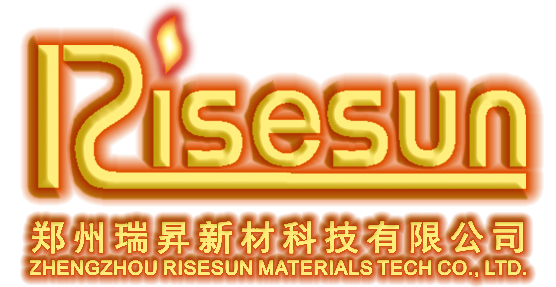06
2025
-
05
The Role of SiC Heating Elements in Modern Electrical Systems: Revolutionizing Heating Technology
The Role of SiC Heating Elements in Modern Electrical Systems Table of Contents 1. Introduction to SiC Heating Elements 2. Understanding Silicon Carbide (SiC) 2.1 Properties of SiC 2.2 Advantages of SiC Over Traditional Materials 3. Applications of SiC Heating Elements 3.1 Industrial Applications 3.2 Residentia
The Role of SiC Heating Elements in Modern Electrical Systems
Table of Contents
- 1. Introduction to SiC Heating Elements
- 2. Understanding Silicon Carbide (SiC)
- 3. Applications of SiC Heating Elements
- 4. Efficiency of SiC Heating Elements
- 5. Future Trends in Heating Technology
- 6. Frequently Asked Questions
- 7. Conclusion
1. Introduction to SiC Heating Elements
The evolution of heating technology has brought forth innovations that significantly enhance efficiency and performance. Among these advancements, **Silicon Carbide (SiC) heating elements** stand out as a revolutionary solution in modern electrical systems. These elements are designed to provide effective thermal management across various applications, allowing for higher temperature capabilities and better energy efficiency.
SiC heating elements operate on principles distinct from traditional heating materials, presenting unique benefits that cater to a broad spectrum of industries. This article delves into the role of SiC heating elements in contemporary electrical systems, examining their properties, advantages, applications, and future trends.
2. Understanding Silicon Carbide (SiC)
Silicon Carbide (SiC) is a compound semiconductor material known for its remarkable thermal and electrical properties. It is composed of silicon and carbon atoms, which contribute to its unique characteristics.
2.1 Properties of SiC
SiC exhibits several key properties that make it an ideal choice for heating elements:
- **High Thermal Conductivity:** SiC can efficiently transfer heat, making it suitable for applications requiring rapid heating and cooling.
- **Wide Bandgap Energy:** This property allows SiC to operate at higher voltages and temperatures than traditional materials, enhancing reliability in extreme conditions.
- **Chemical Resistance:** SiC is resistant to oxidation and thermal shock, ensuring durability and longevity in various environments.
- **Low Thermal Expansion:** This feature minimizes the risk of thermal stress and damage during operation.
2.2 Advantages of SiC Over Traditional Materials
When compared to traditional heating elements made from materials like nickel-chromium alloys or ceramic, SiC offers several advantages:
- **Higher Efficiency:** SiC heating elements can achieve higher temperatures with lower energy input, translating to reduced operational costs.
- **Longer Lifespan:** The robustness of SiC leads to fewer replacements, contributing to lower maintenance costs and downtime.
- **Faster Heating Times:** The exceptional thermal conductivity of SiC means quicker response times for heating applications, enhancing overall system performance.
- **Compact Design:** SiC elements can be designed smaller than traditional counterparts while maintaining efficiency, saving space in electrical systems.
3. Applications of SiC Heating Elements
The versatility of SiC heating elements allows them to be utilized in various applications across multiple sectors.
3.1 Industrial Applications
In industrial settings, SiC heating elements are employed in processes such as:
- **Metal Processing:** SiC elements are used in furnaces for melting and heat treating metals, benefiting from their high-temperature capabilities.
- **Semiconductor Manufacturing:** These heating elements are essential in processes like wafer fabrication, where precise temperature control is crucial.
- **Glass and Ceramics Production:** The ability to withstand extreme conditions makes SiC ideal for manufacturing glass and ceramics that require consistent heating.
3.2 Residential Applications
SiC heating elements are also making inroads into residential applications:
- **Electric Heaters:** Consumers benefit from faster heating and energy efficiency in electric heaters utilizing SiC technology.
- **Home Appliances:** SiC is increasingly used in appliances like toasters and ovens, where rapid and uniform heating is desired.
- **Underfloor Heating Systems:** The compact design and efficient heat transfer of SiC elements make them suitable for modern underfloor heating solutions.
4. Efficiency of SiC Heating Elements
The efficiency of SiC heating elements is a significant factor driving their adoption in various applications. Their ability to operate at high temperatures with minimal energy input translates to reduced energy bills for both industrial and residential users.
**Energy Savings:** With SiC heating elements, users can expect a decrease in energy consumption, leading to a lower carbon footprint. This efficiency is particularly beneficial in manufacturing, where high energy costs can significantly impact profitability.
**Thermal Management:** The superior thermal conductivity of SiC ensures that heat is distributed evenly and quickly, reducing the risk of overheating and extending the lifespan of the heating element.
5. Future Trends in Heating Technology
As technology advances, the role of SiC heating elements is expected to expand further. Future trends include:
- **Integration with Renewable Energy Sources:** The compatibility of SiC with alternative energy systems like solar power will likely enhance the sustainability of heating solutions.
- **Smart Heating Systems:** With the rise of IoT (Internet of Things), SiC heating elements can be integrated into smart home systems, allowing for remote monitoring and control, optimizing energy usage based on real-time data.
- **Innovative Designs:** Continuous research is likely to lead to even more compact and efficient designs, making SiC heating elements the go-to solution for future electrical systems.
6. Frequently Asked Questions
1. What are SiC heating elements made of?
SiC heating elements are made from silicon carbide, a compound semiconductor known for its high thermal conductivity and durability.
2. How do SiC heating elements compare to traditional heating elements?
SiC heating elements are generally more efficient, have a longer lifespan, and can operate at higher temperatures compared to traditional materials like nickel-chromium alloys.
3. What are the applications of SiC heating elements?
SiC heating elements are used in various applications, including industrial metal processing, semiconductor manufacturing, residential electric heaters, and underfloor heating systems.
4. Are SiC heating elements environmentally friendly?
Yes, the energy efficiency of SiC heating elements contributes to lower energy consumption, making them a more environmentally friendly option compared to traditional heating solutions.
5. Can SiC heating elements be used in extreme conditions?
Absolutely, SiC heating elements are designed to withstand extreme temperatures and harsh environments, making them ideal for various industrial applications.
7. Conclusion
Silicon Carbide (SiC) heating elements are revolutionizing modern electrical systems with their unmatched efficiency, longevity, and versatility. As industries and consumers alike seek more sustainable and effective heating solutions, SiC technology stands out as a prime candidate for meeting these demands. From industrial manufacturing to residential applications, the benefits of SiC heating elements are becoming increasingly clear.
As we look to the future, it is evident that SiC heating elements will play a crucial role in advancing heating technologies, making them indispensable in both existing and emerging applications. Understanding the significance of these elements will empower industries and consumers to make informed decisions, enhancing energy efficiency and overall performance in electrical systems.



